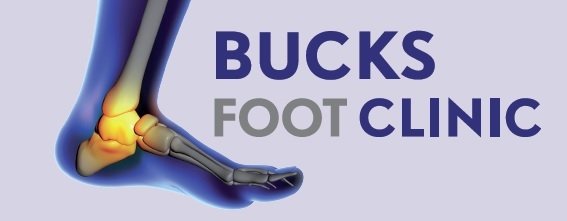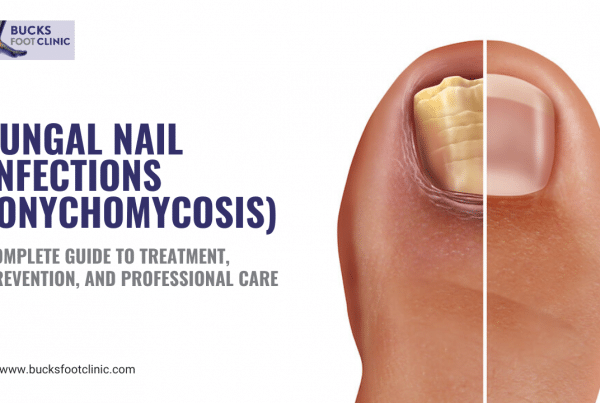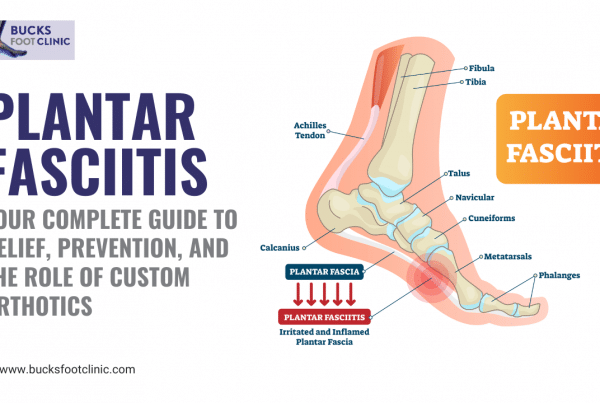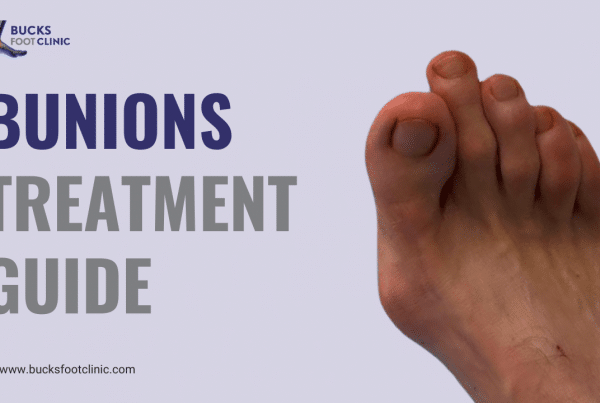
Corns vs. Calluses: How Bucks Foot Clinic in Amersham Treats Them Differently
Walking into our clinic seeking corn removal Amersham services, patients often express confusion about whether they’re dealing with corns or calluses—a distinction that fundamentally changes our treatment approach. At Bucks Foot Clinic callus treatment centre, we’ve observed that misidentification leads to ineffective home treatments and prolonged discomfort. Understanding these conditions’ unique characteristics enables our podiatrists to deliver targeted treatments that address not just symptoms but underlying causes, ensuring lasting relief for Buckinghamshire residents struggling with these common yet distinctly different foot conditions.
Understanding the Fundamental Differences Between Corns and Calluses
The confusion between corns and calluses stems from their similar appearance as areas of thickened, hardened skin. However, their formation mechanisms, locations, and impact on daily life differ substantially. Calluses develop as diffuse, relatively flat patches of thickened skin, typically spanning larger surface areas on weight-bearing regions like heels or the balls of feet. They’re essentially protective shields your body creates against repetitive friction, usually remaining painless unless they become excessively thick or develop fissures.
Corns, by contrast, are concentrated lesions with a distinctive conical core that penetrates deeper skin layers. This dense central nucleus, which gives corns their name (resembling a kernel of corn), presses directly onto nerve endings, creating the sharp, focused pain that distinguishes them from calluses. Hard corns typically form on toe tops, joints, or other bony prominences where shoes create focal pressure points. Soft corns develop between toes where moisture softens the skin, creating a whitish, rubbery texture rather than the typical hard, yellow appearance.
The pain patterns provide crucial diagnostic clues. Calluses generally cause discomfort only when extremely thick, creating a sensation of walking on pebbles. Corns produce immediate, sharp pain with direct pressure—patients often describe feeling like they’re stepping on a needle. This pain differential reflects the structural differences: calluses spread pressure across broader areas whilst corn cores concentrate force onto small, sensitive points.
Microscopically, these conditions reveal distinct patterns. Calluses show uniform thickening of the stratum corneum (outer skin layer) without disrupting normal skin architecture. Corns display a central keratin plug surrounded by compressed skin layers, creating the characteristic inverted cone shape that penetrates toward sensitive deeper tissues. This structural variation explains why simple filing might temporarily reduce callus thickness but proves ineffective for corns, which regenerate from their deep-seated cores unless professionally removed.
Identifying Common Causes and Risk Factors
Footwear problems trigger most corns and calluses, though through different mechanisms. Tight shoes compress toes, creating focal pressure points where corns develop on joints and toe tips. The fifth toe particularly suffers, with ‘pinch corns’ forming where narrow toe boxes squeeze the smallest digit against its neighbour. High heels compound these issues by forcing feet forward, jamming toes against shoe fronts whilst simultaneously increasing forefoot pressure, promoting both corn and callus formation.
Biomechanical abnormalities significantly influence lesion development patterns. Bunions alter toe alignment, creating new pressure points where corns form on adjacent toes. Hammertoes and claw toes elevate joints, causing corns where raised knuckles contact shoe uppers. Flat feet or high arches affect weight distribution, leading to characteristic callus patterns—medial heel calluses in overpronators, lateral forefoot calluses in supinators. Our gait analysis frequently reveals these underlying mechanical issues patients haven’t connected to their skin problems.
Age-related changes increase susceptibility through multiple pathways. Fat pad atrophy reduces natural cushioning, exposing bones to greater pressure. Decreased skin elasticity and slower cell turnover affect the skin’s ability to adapt to stress without excessive thickening. Reduced flexibility and balance issues may alter gait patterns, creating new pressure areas. Additionally, age-associated conditions like arthritis create joint deformities promoting corn formation whilst diabetes affects skin quality and healing capacity.
Occupational and lifestyle factors create predictable patterns. Nurses and retail workers develop heel calluses from prolonged standing. Runners exhibit forefoot calluses corresponding to their strike patterns. Musicians, particularly string players, develop finger calluses that mirror their foot pathology mechanisms. Understanding these activity-related patterns helps our podiatrists develop targeted prevention strategies addressing specific occupational demands whilst maintaining foot health.
How to Prevent Corns and Calluses: Evidence-Based Strategies
Footwear Optimisation Protocols
- Professional fitting assessment: Measure feet annually, as size changes with age and weight fluctuations
- Toe box evaluation: Ensure thumbs-width space between longest toe and shoe end, checking when standing
- Width accommodation: Select shoes matching foot’s widest point, avoiding compression at metatarsal heads
- Heel height restriction: Limit regular wear heels to 4cm maximum, alternating with flat shoes daily
- Break-in period management: Wear new shoes for short periods initially, gradually increasing duration
Comprehensive Foot Care Routines
- Strategic moisturisation: Apply 10-20% urea creams nightly, avoiding between-toe areas to prevent maceration
- Controlled exfoliation: Use fine-grade pumice weekly on damp skin, limiting to 30-second sessions per area
- Protective padding placement: Position silicone or foam pads before anticipated pressure exposure
- Inspection protocols: Examine feet after removing shoes, noting any redness lasting over 20 minutes
- Temperature management: Keep feet dry using moisture-wicking socks changed when damp
Biomechanical Corrections
- Orthotic intervention: Custom insoles addressing specific pressure redistribution needs
- Toe spacing devices: Silicone separators preventing interdigital pressure and moisture accumulation
- Metatarsal support: Dome pads lifting and spreading metatarsal heads, reducing forefoot pressure
- Heel elevation adjustments: Compensate for leg length discrepancies causing uneven pressure distribution
- Proprioceptive training: Balance exercises improving gait efficiency and reducing compensatory patterns
Environmental and Lifestyle Modifications
- Surface variation: Alternate between different flooring types during prolonged standing
- Activity modification: Incorporate low-impact exercises between high-stress activities
- Weight optimisation: Reduce overall foot pressure through gradual, sustainable weight management
- Stretching programmes: Daily calf and toe stretches maintaining flexibility and reducing tension
- Occupational adaptations: Use anti-fatigue mats and compression stockings for standing occupations
Why a Podiatrist Is Better Than Home Remedies
Professional podiatric intervention surpasses home remedies through precise diagnosis, appropriate treatment selection, and comprehensive management addressing underlying causes. Many patients attempting self-treatment inadvertently worsen their conditions using inappropriate techniques or products. Over-the-counter corn plasters, containing salicylic acid, often damage surrounding healthy tissue, creating wounds requiring medical attention. Similarly, aggressive home filing can stimulate reactive hyperkeratosis, actually accelerating skin thickening.
Our podiatrists possess specialised training recognising subtle differences between various hyperkeratotic lesions. What appears as a simple corn might be a verruca, foreign body reaction, or even early malignancy. Professional assessment ensures accurate diagnosis, preventing delays in appropriate treatment for potentially serious conditions. We utilise dermatoscopes for detailed visualisation and can perform biopsies when clinical presentation remains ambiguous.
The technical expertise required for safe, effective lesion removal cannot be replicated at home. Professional debridement employs sterile, surgical-grade instruments achieving precise tissue removal without damaging healthy skin or creating infection portals. Our controlled technique removes entire corn cores whilst preserving surrounding tissue integrity—something impossible with pharmacy-bought tools. For calluses, we achieve gradual, even reduction preventing the rebound thickening often following aggressive home treatment.
Prescription treatments available through podiatrists vastly exceed over-the-counter options’ effectiveness. We prescribe keratolytic agents at therapeutic concentrations, injectable corticosteroids for inflamed lesions, and custom-compounded preparations addressing specific presentations. Our access to advanced modalities including cryotherapy, laser treatment, and minor surgical procedures provides solutions for resistant cases where home remedies repeatedly fail.
Most critically, professional treatment addresses causative factors rather than merely removing visible lesions. Our biomechanical assessments identify structural abnormalities requiring orthotic intervention. We evaluate systemic health factors affecting skin healing and provide appropriate medical referrals when indicated. This comprehensive approach ensures lasting resolution rather than the temporary relief home remedies might provide.
How to Fix Corns and Calluses: Clinical Treatment Protocols
Diagnostic Assessment Framework
- Clinical examination: Visual inspection, palpation, and dermoscopy evaluating lesion characteristics
- Pressure analysis: Digital force plate assessment mapping specific pressure concentrations
- Biomechanical screening: Joint range assessment, muscle testing, and gait evaluation
- Vascular assessment: Doppler studies evaluating circulation adequacy for healing
- Neurological testing: Sensation evaluation determining safe treatment parameters
Corn-Specific Treatment Interventions
- Precision enucleation: Scalpel debridement removing entire corn core using concentric reduction technique
- Cavity management: Application of silver nitrate or phenol preventing core regeneration
- Pressure deflection: Custom-moulded silicone devices redirecting forces from affected areas
- Inflammatory control: Targeted corticosteroid injections for acutely inflamed lesions
- Surgical options: Exostectomy or arthroplasty for corns caused by bone prominences
Callus Management Protocols
- Staged debridement: Progressive reduction over multiple sessions preventing rebound hyperkeratosis
- Chemical keratolysis: Application of 40% urea or salicylic acid preparations under occlusion
- Mechanical smoothing: Diamond-tipped burr reduction achieving even surface texture
- Hydration therapy: Prescribed emollient regimens restoring skin barrier function
- Load redistribution: Orthotic modifications spreading pressure across larger surface areas
Advanced Treatment Modalities
- Radiofrequency therapy: Controlled thermal destruction of hyperkeratotic tissue
- Photodynamic therapy: Light-activated treatments for resistant lesions
- Platelet-rich plasma: Growth factor injections promoting normal skin regeneration
- Custom silicone orthoplasty: Individually crafted devices providing long-term pressure relief
- Combination protocols: Integrated approaches using multiple modalities for complex cases
Specialised Care Pathways at Bucks Foot Clinic
Our corn removal Amersham service extends beyond simple lesion removal to comprehensive care pathways addressing individual patient needs. We’ve developed specific protocols for different patient populations, recognising that a retired gardener’s calluses require different management than a marathon runner’s corns. This personalised approach ensures optimal outcomes whilst accommodating lifestyle requirements and health considerations.
For workers whose occupations contribute to their foot problems, we provide workplace assessments and liaise with occupational health departments. Our reports support reasonable adjustments requests, potentially including appropriate footwear provisions or modified duties during treatment. We understand that taking time off work isn’t always feasible, so we offer early morning and evening appointments accommodating work schedules.
Athletic patients receive sport-specific management plans. We time treatments around competition schedules, provide temporary padding solutions for important events, and develop training modifications preventing problem recurrence. Our relationships with local sports clubs enable us to understand specific sporting demands, tailoring our Bucks Foot Clinic callus treatment protocols accordingly.
Complex cases requiring multidisciplinary input benefit from our established referral networks. We coordinate with rheumatologists for inflammatory arthritis patients, endocrinologists for diabetics, and vascular surgeons for peripheral arterial disease cases. This integrated approach ensures foot lesions are managed within broader health contexts, optimising both local and systemic outcomes.
Long-term Management and Monitoring
Successful long-term management requires regular monitoring and treatment plan adjustments. We establish individualised review schedules based on lesion severity, recurrence patterns, and risk factors. High-risk patients might need monthly appointments whilst others manage with quarterly reviews. These regular assessments enable early intervention before lesions become symptomatic, maintaining foot comfort continuously.
Our maintenance programmes incorporate preventive treatments between acute interventions. Regular professional moisturising treatments, preventive padding applications, and orthotic adjustments keep feet healthy between debridement sessions. We teach patients self-monitoring techniques, providing photographic references helping them recognise when professional attention is needed.
Patient education forms a cornerstone of our long-term management strategy. We provide detailed written instructions about home care, supplemented by practical demonstrations during appointments. Our patient portal offers video tutorials about proper moisturising techniques, padding application, and exercises maintaining foot flexibility. This educational approach empowers patients to actively participate in their foot health maintenance.
We maintain comprehensive treatment records documenting lesion progression, treatment responses, and modification requirements. These records enable us to identify patterns, predict problem periods, and proactively adjust management strategies. For instance, if calluses consistently worsen during specific seasons, we schedule preventive appointments accordingly.
Conclusion
The distinction between corns and calluses represents more than academic interest—it fundamentally determines appropriate treatment selection and long-term management strategies. Whilst both conditions involve skin thickening responses to pressure and friction, their different structures, causes, and impacts demand tailored therapeutic approaches. Understanding these differences enables our podiatrists to deliver targeted treatments addressing both immediate symptoms and underlying causes.
Professional corn removal Amersham services at Bucks Foot Clinic provide comprehensive solutions surpassing home remedy limitations. Our precise diagnostic capabilities, specialised treatment techniques, and advanced therapeutic options ensure safe, effective lesion removal whilst preventing recurrence. Similarly, our systematic Bucks Foot Clinic callus treatment protocols address broader pressure distribution issues through integrated approaches combining debridement, pressure modification, and preventive care.
The value of professional podiatric care extends beyond technical expertise to encompass comprehensive assessment, personalised treatment planning, and long-term management strategies. We identify and address contributing factors that home treatments cannot resolve, from biomechanical abnormalities to systemic health conditions. This holistic approach ensures lasting relief rather than temporary symptom suppression.
Don’t let corns or calluses compromise your mobility and quality of life. Early professional intervention prevents progression, eliminates pain, and restores comfortable foot function. Whether you’re struggling with painful corns limiting your daily activities or calluses affecting your work or sporting performance, our experienced podiatrists can provide effective, lasting solutions. Contact Bucks Foot Clinic in Amersham today to discover how our specialised treatments can address your specific needs, helping you step confidently toward better foot health.



